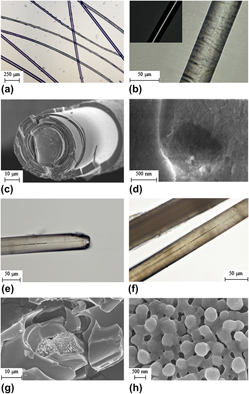Article contents
Templated deposition of porous fullerene-C60 in the interior of siliceous sponge spicules as a biogenic microvessel
Published online by Cambridge University Press: 28 September 2012
Abstract

The unique set of mechanical properties found in rigid biological tissues, which combine high strength and stiffness with superior toughness, offer inspiration for the design of advanced functional structural materials with outstanding performance. This paper reports on the first utilization of one such biogenic material—siliceous sponge spicules, the skeletal elements of sponges (Poriphera)—as a unique naturally nanostructured template for vacuum deposition, while also reporting on the effects of the required chemical and thermal treatments for template preparation on the material’s microstructure and mechanical properties. The confined space within the central channel of spicules from the sponge Euplectella acts simultaneously as a nanotemplate and as a biogenic, optically transparent, glassy microchamber for the preparation of micrometer-sized clusters of fullerene-C60 through vacuum deposition onto the nanostructured surface. This biological material allows an unprecedented and unique microporous morphology of C60 particles to be obtained.
Keywords
- Type
- Articles
- Information
- Copyright
- Copyright © Materials Research Society 2012
References
REFERENCES
- 3
- Cited by




